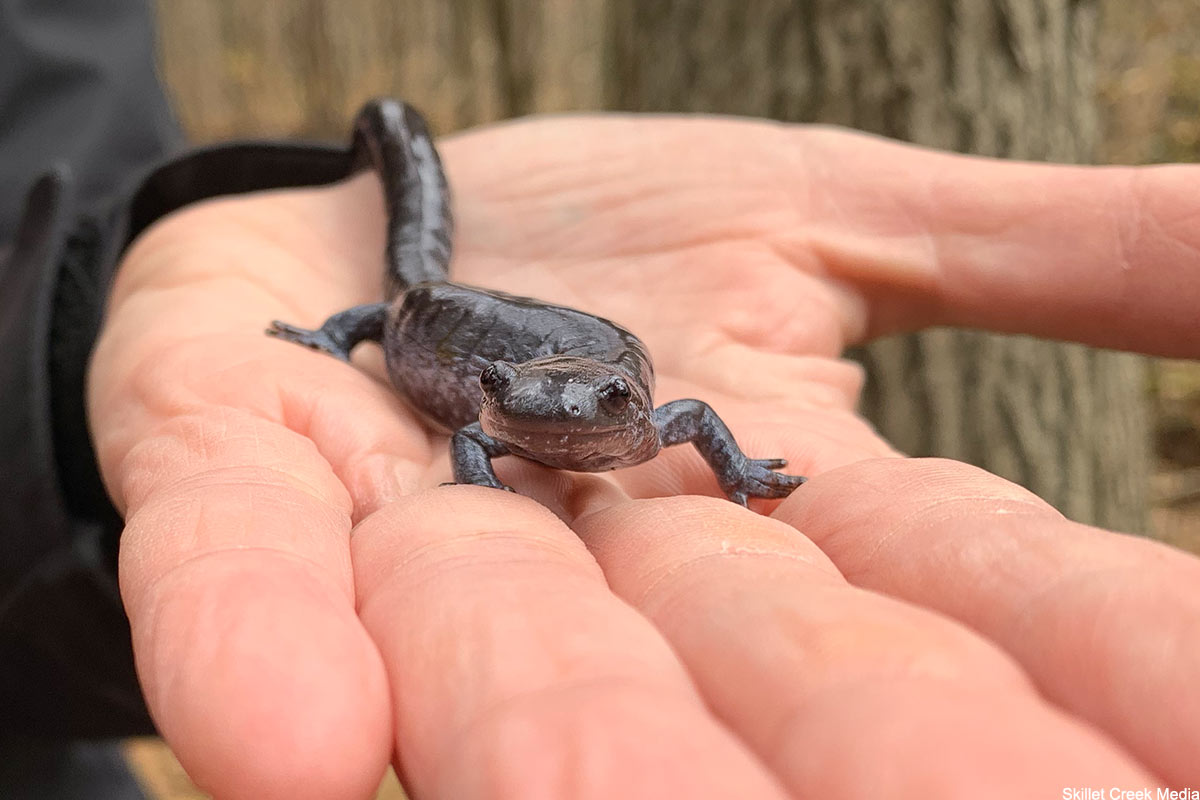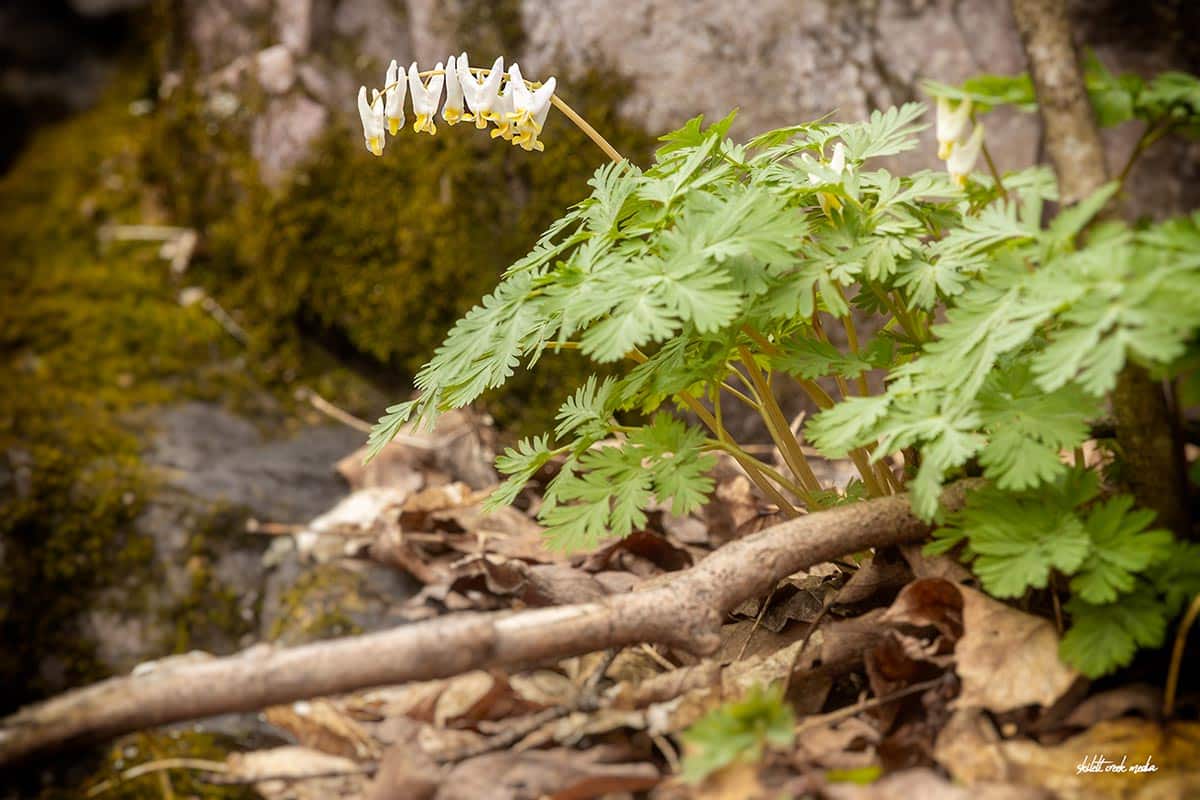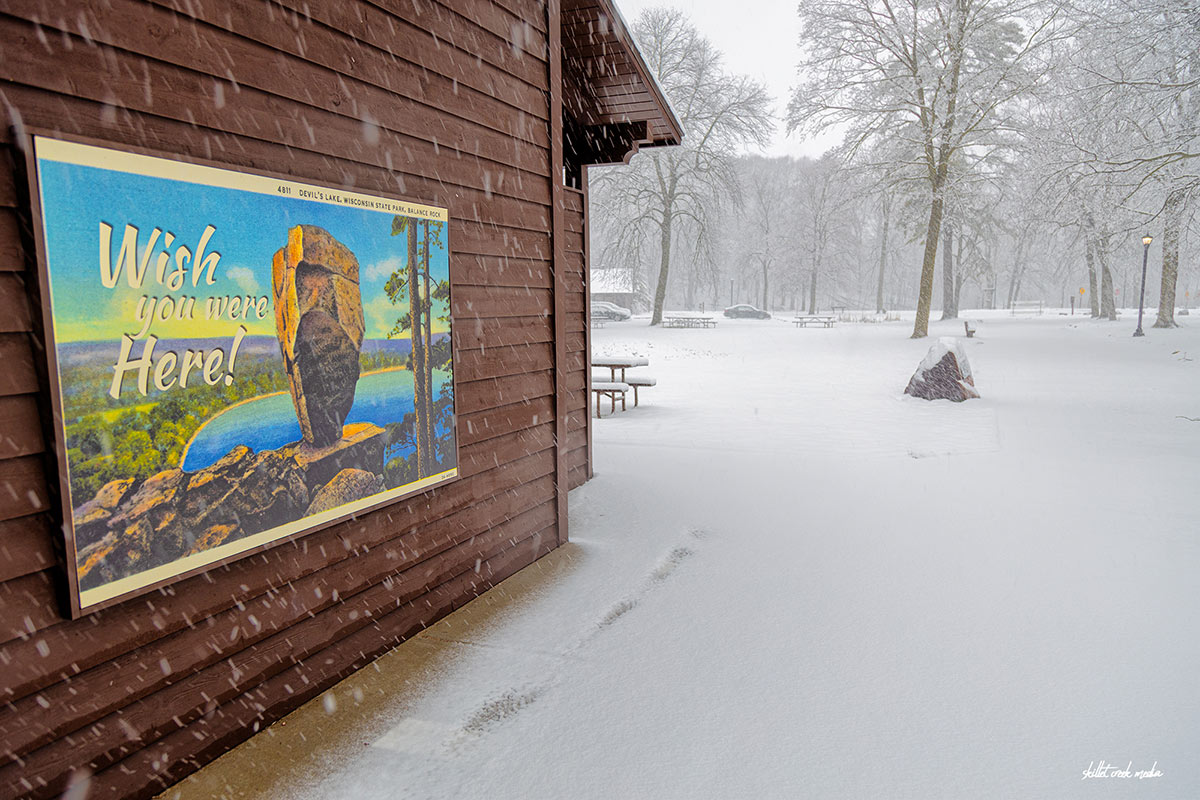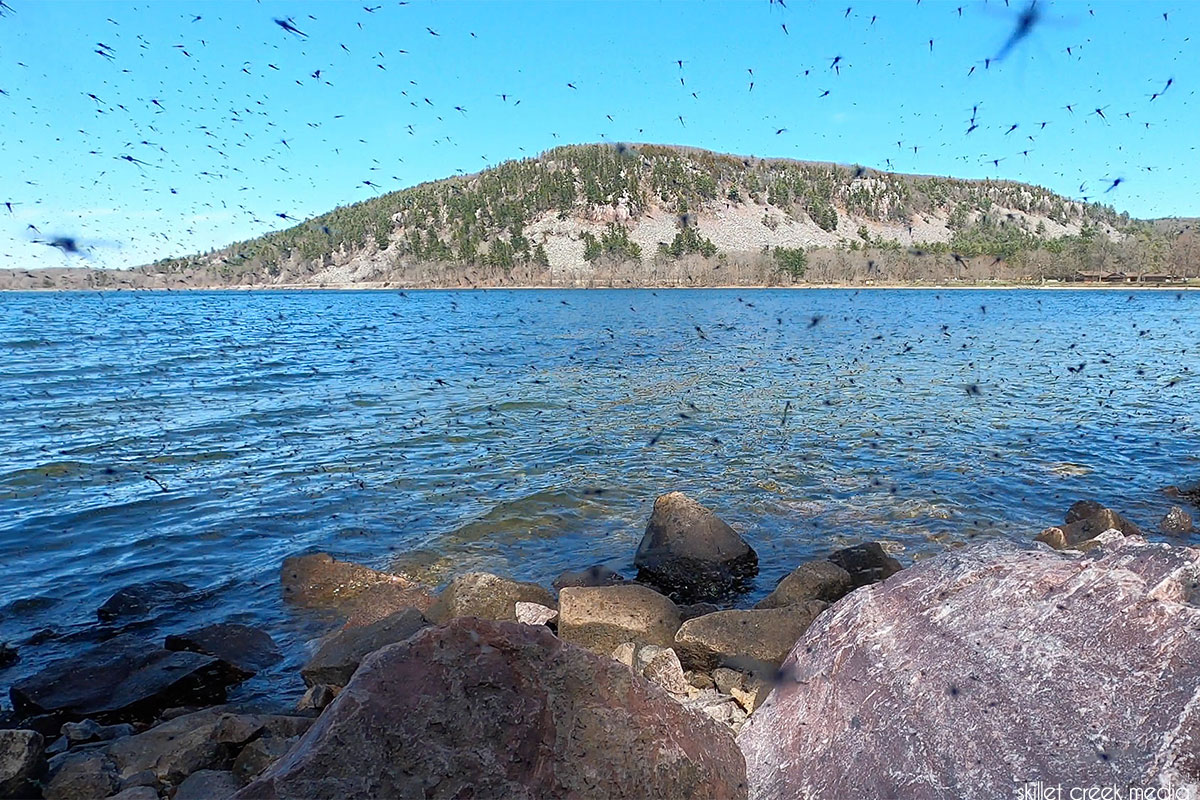Spring has sprung at Devil's Lake State Park, and with it comes a charming little…

Salamanders are not considered cold tolerant. Generally, it is believed that once the cold arrives, they find a hole and hibernate. Well, someone forgot to tell this little one we discovered on the South Bluff of Devil’s Lake State Park yesterday. On the other hand, Salamanders are helping us learn about how our climate is changing. So maybe it knows more than it’s letting on?!

A Bit About Our Salamanders
Blue Spotted Salamanders, which can get up to about 5 ½ inches long, are thought to be common here in Wisconsin. Generally, you can find them in woodlands or wetlands. They’ll spend most of their lives on the forest floor in burrows under the leaf litter, heading out to ponds, puddles, and streams to breed in the early spring. It is thought by most folks that they hibernate in the winter, although others suggest that they simply burrow under the frost line, but stay active all winter. I would suppose that as long as they can find food, which for them means worms and little bugs, they’d be fine. Still, it’s pretty weird to see one above ground and active after our recent blast of snow and cold weather here in central Wisconsin.
Salamanders and Climate Change
Interestingly, Salamanders have something to tell us about climate change. The USDA and US Forest Service have been monitoring salamanders at breeding woodland ponds for years*. What they’ve discovered is that by comparing data from the early 1990s to today, the salamander breeding season occurs almost two weeks earlier now than it did just over a decade ago. What’s more, this correlates with site-specific warming air and water temperatures as well, and as would be expected since amphibians rely on temperature and precipitation cues for breeding. According to the USDA, “This earlier shift has not been documented previously in the upper Great Lakes region. Their findings contribute to growing evidence that amphibian populations may be some of the early species responding to changing temperature and precipitation trends by shifting spring movement and reproductive efforts. “
Bye Little Salamander
After quickly, (and gently) taking a couple of pictures of this little blue-spotted salamander, we set it back down where it was so it could continue on its way. It quickly began burrowing down under the leaves. A good plan if you ask me! It was far too cold to be outside anyway!
References & More Reading
More Biology of the Blue Spotted Salamander
Blue Spotted Salamander – Ontario Nature
Blue-spotted Salamander – Wisconsin DNR
Research Highlights * – USDA
Widespread rapid reductions in body size of adult salamanders in response to climate change – Caruso
Climate Change and Salamanders – Smithsonian’s National Zoo & Conservation Biology Institute

For nearly 2 decades the Skillet Creek blog has focused on 3 main goals; To inspire you to visit and explore the Devil’s Lake region, to help you get the most your visit by sharing tips, events, and other helpful information. Lastly to advocate for our environment & wildlife and talk about how we can keep our natural areas amazing now and into the future! That last goal can sometimes cause controversy, but it’s the only way we can accomplish the first two. – Derrick Mayoleth, Owner.



